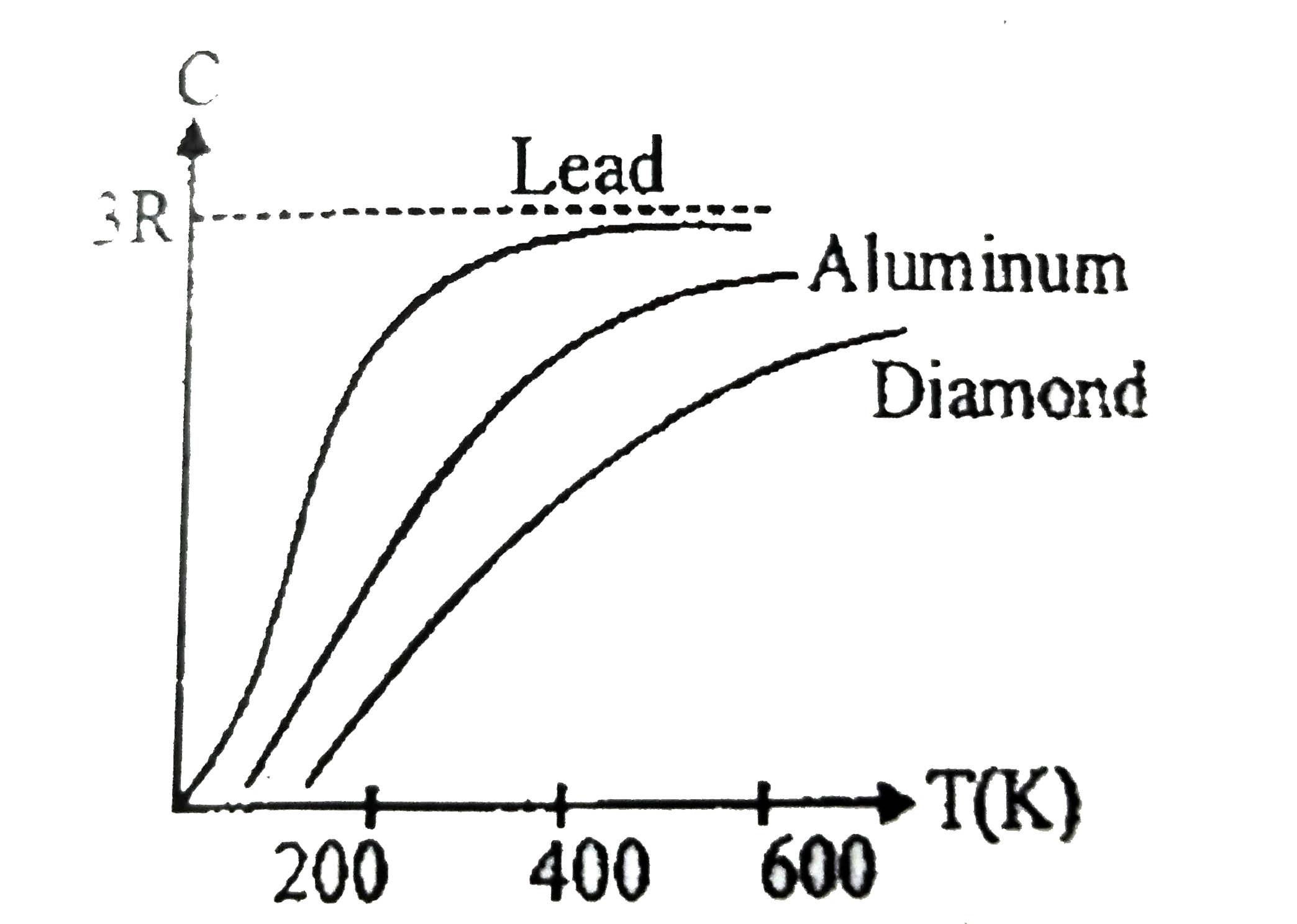According to Dulong & Petits law, molar heat capacity of solids at room temperature is nearly equal to 3R. This can be explained using law of equipartition. Each atom of solid is boned to neighboring atoms by interatomic forces. Each atom can vibrate about its equilibrium positum. So each atom has 6 degrees of freedom. But in relaity, the molar heat capacity of solids varies. with temperature as shown in figure.

At low temperature, the heat capcities decrease with decreasing temperature. This is due to the fact that variational degrees of freedom are frozen out at low temperatures.
Selec the correct statement(s).
A sample of lead requires less heat to go from 100K to 150K then to go from 300K to 350K
A sample of lead requires more heat to go from 400K to 440K then to go from 100K to 140K
For diamond at room temperatures also vibrational degrees of freedom are partially frozen.
The specific heat capacity of all solids at high temperature is nearly the same.
compare from Graph.
Related Playlists
- BOOK - BANSALCHAPTER - TEST PAPERSEXERCISE - PHYSICS PART (A)32videos
TEST PAPERS
- BOOK - BANSALCHAPTER - TEST PAPERSEXERCISE - PHYSICS PART (B)3videos
TEST PAPERS
- BOOK - BANSALCHAPTER - TEST PAPERSEXERCISE - PHYSICS PART- C4videos
TEST PAPERS
- BOOK - BANSALCHAPTER - SEMICONDUCTORSEXERCISE - CBSE Question32videos
SEMICONDUCTORS
Similar Questions
How does specific heat of a solid vary with temperature?
View SolutionIf heat a supplied to a solid, its temperature
View SolutionThe molar heat capacity for a gas at constant T and P is
View SolutionBy measuring heat capacity of the solid at various temperature ___ can be determined.
View SolutionIf heat a supplied to a solid, its temperature
View SolutionMolar heat capacity at constant volume can be given a
View SolutionMolar heat capacity at constant volume can be given as
View SolutionDegree of Freedom | Molar Heat Capacity | Reversible and Irreversible Process | Isothermal Work
View SolutionThe heat capacities of the diatomic molecules attain a limiting value at higher temperature
At room temperature the translational and rotational degrees of freedom contribute to the heat capacities of gases while the vibrational degree of freedom becomes active only at higher temperature .View SolutionThe number of degrees of freedom for each atom of a monoatomic gas will be
View Solution

